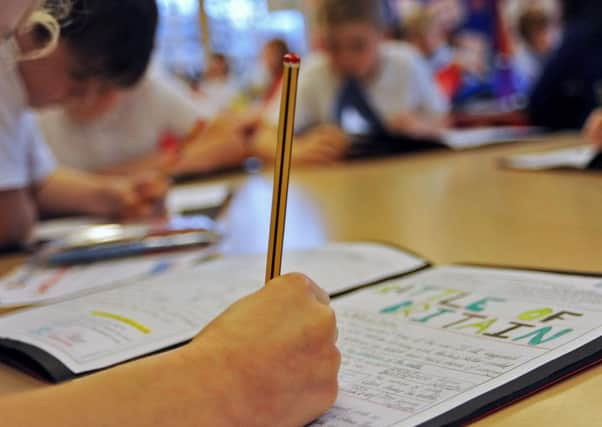19pc rise in pupils being taught in oversized classes, data shows


A boom in population has been well documented over recent years, with a ‘bulge’ in the numbers of young children now working its way through primary settings.
But alongside a 19 per cent hike year on year in the number of children taught in ‘supersize’ classes of over 36 students in Yorkshire, MPs are calling for action.
Advertisement
Hide AdAdvertisement
Hide AdClass sizes keep rising, Wakefield’s Labour MP Mary Creagh has warned, with the result being additional stress on teachers and learners.
“Four out of five schools in Yorkshire and the Humber have had their real terms budget cut by the Conservative Government,” she claimed, citing data collated by the National Education Union’s School Cuts campaign.
“Over £60,300,000 will be cut from our region’s primary schools between 2015 and 2020, a loss of £143 per pupil.
“We want to see an end to pupils being taught in supersized classrooms, and a cap of 30 on all classes. Our children should get the funding they need to achieve their potential.”
Advertisement
Hide AdAdvertisement
Hide AdThe latest Department for Education (DfE) figures, collected in January this year, show a bulge in pupil numbers rising through primary school, from Key Stage 1 to Key Stage 2.
But there has also been a rise in the number of ‘supersize’ classes, with 1,344 children being taught in classes consisting of more than 36 students with a single teacher in Yorkshire, including in North Yorkshire, East Riding and Kirklees.
Last month, headteachers in Sheffield told The Yorkshire Post that some schools were taking on additional pupils to boost funding, as they faced rising pressures.
Patrick Murphy, the National Education Union’s executive member for West Yorkshire, said that anecdotally he had been hearing of infant class sizes – reception, Year One and Two where the usual legal limit is 30 children – were being “breached all over the place”.
Advertisement
Hide AdAdvertisement
Hide AdHe said that this means pupils get less individual education and teachers become overworked.
The union’s policy is for classes having no more than 30 pupils, and in some circumstances much lower than that.
In science classes, for example, where the use of specialist equipment could present safety issues, Mr Murphy said there should be no more than 20 pupils.
“It does have an impact on the teacher and the pupil, and that was acknowledged by the Government a few years ago but it’s slipping because of funding issues, really,” Mr Murphy said. He believes the issue goes hand-in-hand with that of unqualified teachers teaching classes.
Advertisement
Hide AdAdvertisement
Hide AdA DfE spokesperson said: “We are on track to create one million new school places this decade – the largest increase for at least two generations. Between 2011 and 2021 we will be spending £855m to create more school places across Yorkshire and the Humber. Since 2017, the National Funding Formula has provided more money for each pupil in each school to every local authority, which will mean Yorkshire and the Humber as a whole is due to see a cash increase of £149m by 2019/20.”